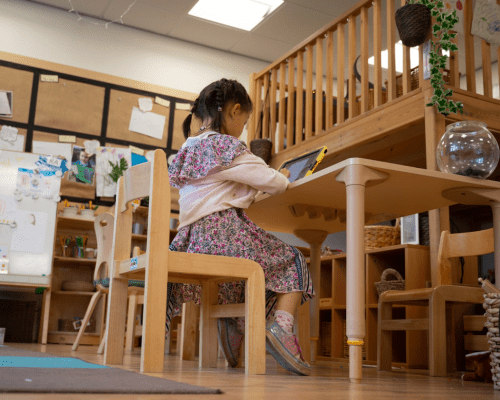The COVID-19 pandemic has upended the lives of not only students across the country, but also the parents and guardians that are guiding them. With going back to school out of the question, virtual or online learning has become the norm. Homes double as classrooms and parents function as interim educators.
Online learning is nothing new. The National Center for Education Statistics notes that almost seven million students are enrolled in distance education courses, and that’s only on the degree-level. This number will certainly blow up even further now that K-12 students are also transitioning to a remote setup. But parents need not fret, as there is evidence that shows how online learning is effective. Data curated by WeForum points out that students retain 25 to 60% more material when studying online compared to only 8 to 10% in a classroom.
If you’re apprehensive about letting your child fully immerse in online learning, here are some tips that you should take note of.
What is needed for online schooling?
Computers are an essential distance learning resource for all students now that most schools are closed. In addition, since your children would need to communicate with their teachers, audio/video technology like microphones, headphones, and webcams are also needed to facilitate remote conferencing. When students are able to see and hear their teacher, it offers them a sense of normalcy and makes them feel that they are in a classroom, albeit in a virtual space.
Of course, it also goes without saying that your child would also need a dedicated space at home that is optimized for learning. An effective learning environment should be well-lit, quiet, and relatively free of distractions. You don’t even need to splurge to outfit it with supplies — you can make use of what you already have. You can transform a coffee table into a desk and use shoeboxes or cardboard boxes as storage devices.
Tips to make online schooling effective for your child:
Eliminate distractions.
As writer Susan Stiffelman reiterated in a previous post, it’s of utmost importance to help your kids enjoy the benefits of social connectivity offered by technology while also teaching them when to hit the “off” switch. When they’re engaging in lessons, it may be worth imposing a “digital quarantine” where they only focus on their schoolwork. It would be best to limit their use of their devices for things beyond school work until the studying session is done. But you also have the option to decide whether or not to allow them to play with their device during designated breaks with the reminder that they will only get to tinker with it for a limited amount of time.
Create boundaries.
Like with remote working, online schooling can easily blur the line between work and play. It’s especially confusing for your child since everything is done at home, so everyone needs to have an understanding that it’s important to adhere to a certain schedule. Lifestyle writer James Gonzales highlights the importance of boundaries with family members at home, as distractions can possibly lead to unwarranted stress for everyone involved. Your kids are not exempted from such distractions, which is why it’s crucial to sit down as a family and talk about knowing the distinction between work time, school time, playtime, and rest. Everyone should respect each other’s time and encourage all family members to be more productive.
Establish a consistent schedule.
Just as schools operate on a pre-determined schedule, US News also suggests that your kids learning at home should also have their own schedule. Work with your child to establish a plan that is close to what they had in their regular classes. You may also want to consult the teachers for additional guidance. By keeping them as close to their typical schedule as possible, you can help them ensure that they are on top of all their subjects, even their least favorite ones. Kids tend to push other courses to the back burner when unsupervised, so it’s best to stick to a schedule that ensures that they cover everything they need.
Article exclusively written for americanspcc.org
Authored by Rebecca Jeanne
References:
- https://nces.ed.gov/fastfacts/display.asp?id=80
- https://www.weforum.org/agenda/2020/04/coronavirus-education-global-covid19-online-digital-learning/
- https://americanspcc.org/2017/03/15/parenting-digital-age/
- https://daydreaminginparadise.com/30-tips-for-professionals-working-from-home-during-the-covid19-pandemic/
- https://health.usnews.com/wellness/for-parents/articles/virtual-education-the-new-normal-during-the-coronavirus-pandemic

